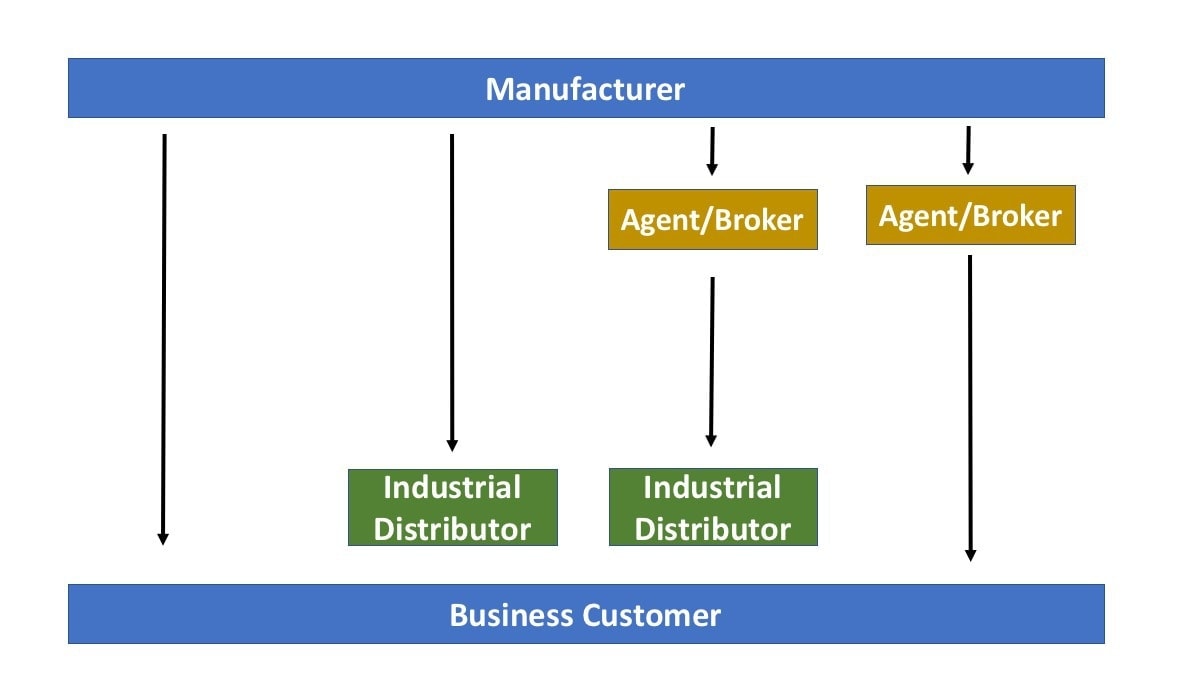Whenever designing a distribution channel, there are many factors in consideration. One of them is how close the company is to its target market. The other is the expansion plans of the company and how expansion will require a deeper distribution network. Thus, to establish a distribution plan, a company needs to decide on a channel structure.
There are two types of Channel structures – The Industrial channel structure and the Consumer channel structure. Both of these are discussed in this article.
1) The Consumer Channel Structure.
The consumer channel structure is generally used in FMCG markets or consumer durable markets. This channel structure is known for the various kinds of elements it has in its distribution network. Let us look at each player in the distribution network and their role in the channel structure.
From top to bottom, these are the players while deciding the channel structure.
A) The manufacturer – This is the parent company which wants to distribute its products to the end customer and wants to set up a distribution channel.
B) The retailer – This is the last point of contact between the manufacturer and the customer. To sell the product and to show its features to a customer, a company needs to have a retail outlet. In case of companies like Bose, there are many company owned outlets which directly sell the product to the end customer.
C) The Wholesaler – The wholesalers are people who purchase inventory in huge bulk from the manufacturer and then sell it forward to a retailer. Wholesalers are responsible for breaking the bulk in case of FMCG products and in case of consumer durables, will be responsible for a complete territory.
D) The Agent or Broker – The agent or the broker is the one who does the deal between the end retailer and the company or the wholesaler and the company. He receives a small commission for setting up the deal. A broker can also be a C&F – A carrying and forwarding agent which might be the third level of the channel structure.
E) Consumer – The one who buys the end product from the retailer.
Thus, based on these players, the consumer channel structure may consist of different flow of material.
Flow 1 – Where the Manufacturer sells to a retailer or opens its own retail outlets.
Flow 2 – Where the manufacturer sells to a wholesaler who in turn sells to retailers.
Flow 3 – Where the manufacturer has a middle man in the form of an agent or a broker. The Agent or the broker sells directly to large retailers.
Flow 4 – Wherein the agent or broker may sell to wholesalers who in turn sell to retailers.
The consumer Channel structure has some unique points.
- There are 4 different types of distribution types in the consumer channel structure
- In no scenario, the manufacturer sells directly to the customer. There is always a middleman in between.
- Breaking the bulk plays a big role in the channel structure of FMCG and Consumer durable industry.
- The Consumer channel structure generally too many transactions on a per day basis as compared to industrial channel. In industrial channel the volume may be bulk but transactions are lesser.
2) The Industrial Channel Structure
Almost the same players as the consumer channel structure exist in the industrial channel. Here the manufacturer is producing industrial goods and is dealing in B2B sales (such as ball bearings or lubricants or metal parts & equipments)
The one player who is different in the industrial channel structure is
F) The Industrial Distributor – The Industrial distributor is like the wholesaler in the consumer channel. The distributor takes care of sales, stocking and providing the product to the end customer. Mostly in the Industrial channel, the distributor also takes care of service and is known to be technically sound about the product. Here the sales are in huge volumes and repeat buying is more than individual purchases. The flow is as follows.
Flow 1 – Manufacturer gives the product in bulk directly to the business customer. Commonly observed in heavy equipment and machinery supply.
Flow 2 – The Manufacturer supplies the material to an industrial distributor who in turn takes care of the sales and supply to local companies. Commonly observed in medium and small equipment supply.
Flow 3 – An agent or broker of the company contacts the distributor and supplies the material to him earning a commission for himself in this procedure. This happens quite less in the industrial segment because of the huge volume and high margins and competition involved. Thus, brokers and agents are generally avoided in the industrial channel.
Flow 4 – The agent or broker directly sells to the end customer with having a commission In between. Again this is a common occurrence in heavy and bulky material.
The unique points about the Industrial channel structure is
- It is a flat hierarchy. There are not many layers of protection between manufacturer and consumer.
- The technical products generally require the involvement of the manufacturer besides the other players.
- Service is extremely important otherwise it hampers sales as well.
- Repeat buying is a common occurrence and a major focus of B2B industries.
Overall, the above 2 were the types of channel structures commonly observed in the industrial or commercial segment.
Liked this post? Check out the complete series on Distribution
